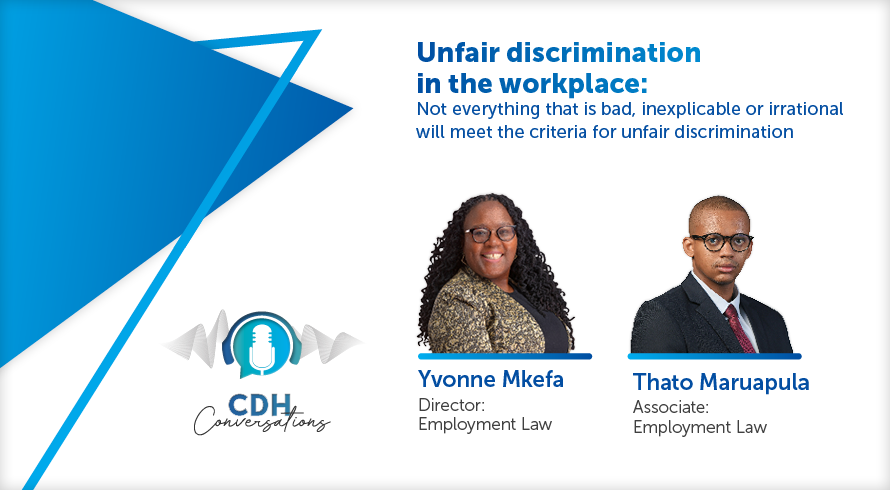The devil is in the detail: When new grounds of appeal can be raised, and when not
At a glance
- The recent decision in IT45710 by the Tax Court emphasizes the importance of sticking to the original grounds of objection in tax cases, but also discusses an exception to this principle.
- The taxpayer in IT45710 disputed a disallowed deduction in an additional assessment and sought to raise a new ground of appeal regarding the inclusion of the deduction in its gross income.
- The court ruled that the new ground of appeal was not permitted under Rule 32(3) of the Tax Administration Act rules as it differed from the original ground and related to a different amount (gross income).
Facts
The taxpayer in IT45710 declared gross income of R320,846,361 for its 2018 tax year and claimed a deduction of R11,072,237 from this amount. When the South African Revenue Service (SARS) audited the taxpayer for this year of assessment, it disallowed the R11,072,237 deduction and issued an additional assessment. This additional assessment was only in terms of this deduction and did not adjust the taxpayer’s gross income at all.
The taxpayer disputed SARS’ additional assessment on the grounds that SARS had erred in disallowing the R11,072,237 deduction, and therefore this should be deducted from its gross income in determining its taxable income. SARS disallowed this objection and the taxpayer appealed to the Tax Court.
The taxpayer’s notice of appeal indicated that it was lodged against SARS’ disallowance of the R11,072,237 deduction, and on no other ground. However, following SARS filing its Rule 31 statement of grounds of assessment, in response to the taxpayer’s notice of appeal, the taxpayer sought to rely on a new ground of appeal in its Rule 32 statement of grounds of appeal, namely that the R11,072,237 it had claimed as a deduction should not have been included in its gross income in the first place. This new ground was raised by the taxpayer in the alternative to its initial ground of appeal and included in its objection, being against SARS’ disallowance of the R11,072,237 deduction. The amount in question related to a profit distribution to a related party referred to in the taxpayer’s financials as a partnership. The alternative ground of appeal was that the amount did not form part of the taxpayer’s gross income, as it did not accrue to and was not received by the taxpayer.
SARS challenged the taxpayer’s ability to raise this new ground of appeal under Rule 32(3) of the rules promulgated under section 103 of the Tax Administration Act No 28 of 2011 (Rules). The taxpayer, on the other hand, argued that it was permitted to do so under Rule 32(2) and Rule 33(2).
Rule 32(3) and Rule 33(2)
Rule 32(3) of the Rules provides for the taxpayer to file a statement of its grounds of appeal, and states that:
“The appellant may not include in the statement a ground of appeal that constitutes a new ground of objection against a part or amount of the disputed assessment not objected to under Rule 7.”
Rule 33(2) then provides for SARS to file a statement in reply to the taxpayer’s statement of grounds of appeal, and states that:
“The reply to the statement of grounds of appeal must set out a clear and concise reply to any new grounds, material facts or applicable law set out in the statement.”
The taxpayer argued that Rule 32(3) only prohibited it from raising a new ground of appeal if this new ground was against a part or amount of the disputed assessment against which it had not already objected. As the R11,072,237 was already in dispute, the taxpayer argued that it was permitted to raise the new ground of appeal. Further, the taxpayer argued that Rule 33(2) contemplated new grounds of appeal being raised by a taxpayer, and this rule permitted SARS to reply to these new grounds of appeal.
SARS on the other hand raised three arguments:
- That the R11,072,237 deduction was in dispute and not the taxpayer’s R320,846,361 gross income, and the taxpayer’s new ground of appeal concerned its gross income.
- That the taxpayer’s initial ground of objection only disputed SARS’ disallowance of the R11,072,237 in the additional assessment, and did not dispute the entire additional assessment.
- That the taxpayer’s two grounds of appeal would not render the same result if successful as the original ground would result in an alteration to the taxpayer’s allowable deductions, while the new ground would result in an alteration of the taxpayer’s gross income.
The court in IT45710 therefore had to assess:
- whether Rules 32(3) and 33(2) of the Rules permitted the taxpayer to rely on a new ground of appeal against a part of the additional assessment that was already in dispute; and if so
- whether in fact the taxpayer’s gross income was already in dispute.
Decision
In coming to its decision, the Tax Court examined the legal development of the Rules and their application in various past cases. Notably, the court focused on the case of ITC 1912 80 SATC 417 (ITC 1912).
In ITC 1912 the taxpayer had also relied on a new ground of appeal, arguing this to be permitted by Rule 32(3) of the Rules as it concerned a part of the assessment already in dispute. Here the court found that the taxpayer had merely adopted a different approach to the same issue that was before it, and therefore the new ground of appeal was permitted.
However, in the present case of IT45710 the court was not convinced that the taxpayer’s new ground of appeal was comparable to the taxpayer in ITC 1912. Looking at the case of Matla Coal Ltd v Commissioner for Inland Revenue [1987] (1) SA 108 (A), the court found that the taxpayer had to show that the substance of its two grounds of objection were the same.
As the taxpayer’s new ground of appeal was against a different amount (its gross income) which was never in dispute, the court found that the substance of the new ground differed from the substance of the taxpayer’s original ground. Therefore, the court found that an objection to a disallowance of a deduction is not equivalent to an objection against gross income. As such, the court decided that the taxpayer’s new ground was not a re-packaging of its original ground of objection, and therefore did not fall within the ambit of Rule 32(3) of the Rules.
Food for thought
The court’s reiteration of the principles from ITC 1912 and Matla Coal does leave a taxpayer with fuel for thought while on the road to the Tax Court. Furthermore, the case under discussion (IT45710) would have been heard prior to the Nesongozwi judgment being handed down by the Supreme Court of Appeal (SCA) on 24 October 2022. The judgment in IT45710 was handed down on 29 November 2022. An interesting question to consider is whether the Tax Court would have reached a different decision, had it considered and applied the approach adopted in Nesongozwi, where the SCA found that some of the grounds raised for the first time in the High Court appeal (after the Tax Court hearing) could be raised, in accordance with the Matla Coal principle. As indicated in Matla Coal and applied in Nesongozwi, although as a rule a taxpayer is not permitted to raise new grounds of objection on appeal, the exception to this is where a new ground is so close to the original ground of objection that these grounds are the same in substance. Provided a taxpayer remains within these lines, this can be a valuable tool where a ground was not originally raised in an objection. However, what IT45710 and Nesongozwi appear to illustrate, is that the application of the principle in Matla Coal, will depend on the facts and that the nature of the amount to which the new ground of appeal relates (gross income or deduction in the current instance) must be considered.
The information and material published on this website is provided for general purposes only and does not constitute legal advice. We make every effort to ensure that the content is updated regularly and to offer the most current and accurate information. Please consult one of our lawyers on any specific legal problem or matter. We accept no responsibility for any loss or damage, whether direct or consequential, which may arise from reliance on the information contained in these pages. Please refer to our full terms and conditions. Copyright © 2025 Cliffe Dekker Hofmeyr. All rights reserved. For permission to reproduce an article or publication, please contact us cliffedekkerhofmeyr@cdhlegal.com.
Subscribe
We support our clients’ strategic and operational needs by offering innovative, integrated and high quality thought leadership. To stay up to date on the latest legal developments that may potentially impact your business, subscribe to our alerts, seminar and webinar invitations.
Subscribe




